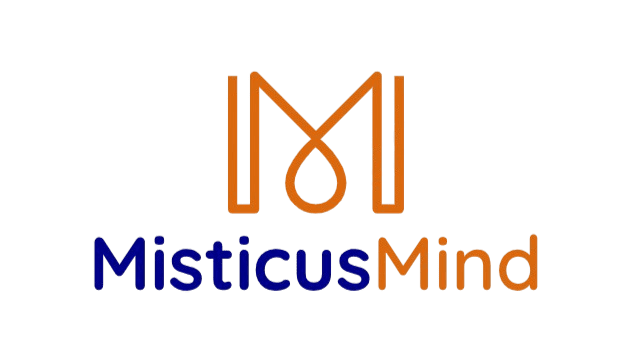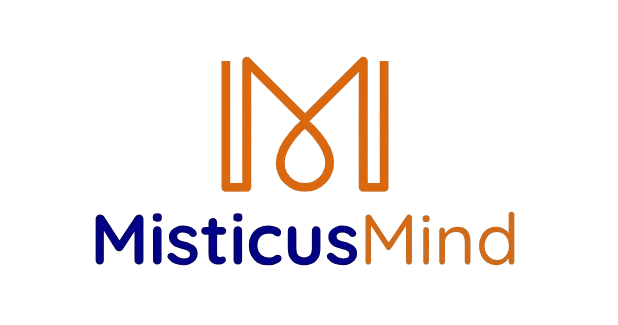The Impact of AI on Legal Profession: Redefining the Role of Lawyers


Artificial Intelligence is RESHAPING the legal profession at breakneck speed. What once seemed like distant future technology has become today’s reality in law firms worldwide. From document review to client consultations, AI tools are changing how lawyers work and think about their practice. This transformation isn’t just about technology – it’s fundamentally altering the business of law, making legal services more efficient, accessible, and strategic than ever before.
Key Impacts of AI on Legal Professionals
The numbers don’t lie – AI has already made SIGNIFICANT inroads into legal practice. According to Thomson Reuters Legal, artificial intelligence is transforming core legal functions at remarkable rates across the profession.
Here’s how AI is currently impacting legal work:
- Document Review: 77% of legal professionals report using AI for document analysis and review.
- Legal Research: 74% leverage AI tools for case law research and precedent analysis.
- Brief Writing & Summarization: 59% use AI for drafting legal documents and creating case summaries.
- Contract Analysis: 52% employ AI for contract review and risk assessment.
- Client Communication: 43% utilize AI for client intake and basic legal guidance.
| AI Application | Adoption Rate | Time Savings |
|---|---|---|
| Document Review | 77% | 65-80% |
| Legal Research | 74% | 50-70% |
| Brief Drafting | 59% | 40-60% |
| Contract Analysis | 52% | 55-75% |
These statistics reveal a profession in rapid transition. Lawyers who once spent HOURS manually reviewing contracts now complete the same work in minutes. The efficiency gains are staggering, but they’re just the beginning of AI’s impact on legal practice.
AI’s Impact on Legal Workflows
Traditional legal workflows followed predictable patterns that hadn’t changed much in decades. AI has completely REVOLUTIONIZED these processes, creating streamlined workflows that maximize efficiency and accuracy.
Before AI Integration:
- Manual document review (8-12 hours per case)
- Time-intensive legal research using traditional databases
- Hand-drafted briefs and motions
- Sequential case preparation steps
After AI Integration:
- Automated document scanning and analysis (30-60 minutes)
- AI-powered research with Westlaw Edge and Lexis+ AI tools
- AI-assisted drafting with human oversight
- Parallel processing of multiple case elements
Contract drafting exemplifies this transformation perfectly. Previously, lawyers would spend DAYS creating contracts from scratch, referencing old agreements and manually checking for compliance issues. Now, AI tools can generate initial contract drafts in minutes, incorporating relevant clauses and flagging potential risks automatically.
Risk assessment has similarly evolved. AI systems analyze thousands of similar cases, identifying patterns and potential outcomes that human lawyers might miss. This doesn’t replace legal judgment – it ENHANCES it by providing comprehensive data analysis that informs better decision-making.
AI’s Impact on Clients and Access to Justice
Perhaps the most EXCITING development in legal AI is its potential to democratize legal services. Traditional legal representation often came with hefty price tags that put quality legal help out of reach for many people.
Consider Sarah, a small business owner facing a contract dispute. Previously, she might have faced legal fees of £300-500 per hour for attorney consultation. Today, AI-powered platforms like Garfield AI offer initial legal guidance for as little as £2, making legal advice accessible to virtually anyone with an internet connection.
This accessibility revolution extends beyond cost savings. AI legal assistants can provide 24/7 availability, breaking down time barriers that traditionally limited access to legal help. Rural communities, underserved populations, and individuals with non-standard schedules can now access legal guidance when they need it most.
However, this democratization comes with important caveats. While AI can handle routine legal questions and basic document preparation, complex legal matters still require human expertise. The key is knowing when AI assistance is sufficient and when professional legal representation becomes ESSENTIAL for proper case handling.
Benefits of AI Integration in Law
The advantages of AI adoption in legal practice extend far beyond simple automation. Legal professionals are discovering transformative benefits that reshape their entire approach to practicing law.
- Massive Time Savings: Thomson Reuters Legal reports lawyers save approximately 200 hours annually through AI integration.
- Cost Reduction: Firms report 30-50% reductions in document review costs.
- Enhanced Accuracy: AI tools catch errors and inconsistencies human reviewers might miss.
- Strategic Focus: Lawyers spend more time on high-value strategic work instead of routine tasks.
- Improved Client Service: Faster turnaround times and more comprehensive case analysis.
- Competitive Advantage: Early AI adopters gain significant market advantages over traditional practices.
These benefits compound over time. As lawyers become more proficient with AI tools, their efficiency improvements accelerate. The saved time gets reinvested into client relationship building, strategic thinking, and complex problem-solving that truly requires human expertise.
Concerns & Challenges
Despite AI’s promise, the legal profession faces SERIOUS challenges as it navigates this technological transformation. These concerns require careful consideration and proactive solutions.
Accuracy & AI Hallucination
The infamous Musa v. Avianca case serves as a cautionary tale about AI limitations. Lawyers submitted a legal brief containing fake case citations generated by ChatGPT, resulting in sanctions and professional embarrassment. This incident highlights AI’s tendency to “hallucinate” – generating plausible-sounding but entirely fabricated information.
Legal accuracy demands zero tolerance for error. When AI systems confidently present false information, lawyers must maintain rigorous verification processes. The solution isn’t avoiding AI but implementing robust fact-checking protocols that combine AI efficiency with human oversight.
Ethical and Regulatory Pitfalls
Legal ethics become COMPLEX when AI enters the equation. The Michigan Bar Association has raised concerns about unauthorized practice of law when non-lawyers use AI tools to provide legal advice. Questions arise about lawyer supervision, client confidentiality, and professional responsibility when AI systems handle sensitive legal information.
Regulatory frameworks struggle to keep pace with AI development. What happens when AI makes decisions that affect client outcomes? Who bears responsibility for AI errors? These questions require careful consideration as the profession develops new ethical guidelines.
IP & Copyright Ambiguity
Intellectual property concerns create another layer of complexity. Recent settlements, including Anthropic’s copyright disputes, highlight uncertainties about AI training data and content ownership. When AI generates legal documents, who owns the intellectual property? Current copyright law assumes human authorship, creating legal gray areas when AI becomes the primary creator.
Business Model Disruption
The traditional billable hour model faces FUNDAMENTAL challenges from AI efficiency. If AI can complete work in minutes that previously took hours, how do law firms maintain revenue? This disruption forces firms to reconsider their entire business model, shifting from time-based billing to value-based pricing structures.
| Challenge | Impact Level | Mitigation Strategy |
|---|---|---|
| AI Hallucination | High | Rigorous verification protocols |
| Ethical Issues | Medium | Updated professional guidelines |
| IP Concerns | Medium | Clear ownership agreements |
| Business Model | High | Value-based pricing transition |
How Is AI Changing the Legal Profession?
The transformation extends beyond individual tasks to reshape entire professional roles. Legal professionals are evolving from document processors to strategic advisors, fundamentally changing what it means to practice law.
Traditional Legal Roles:
- Document review specialists
- Research assistants
- Form completion experts
- Routine litigation support
AI-Augmented Legal Roles:
- Strategic legal advisors
- AI prompt engineers
- Technology integration specialists
- Complex problem-solving consultants
This shift represents a PROFOUND evolution in legal practice. Lawyers are becoming strategic partners who leverage AI capabilities to provide more comprehensive, efficient, and valuable services to their clients. The most successful legal professionals are those who embrace AI as a powerful tool while maintaining their uniquely human skills in judgment, empathy, and complex reasoning.
What About the Future Roles in Law?
The legal profession’s future will likely feature hybrid roles that combine traditional legal expertise with technological proficiency. Legal professionals must adapt to remain relevant in an AI-enhanced legal landscape.
Emerging Legal Roles:
| Role | Key Skills | AI Integration |
|---|---|---|
| Legal Strategist | Complex reasoning, client relations | AI-assisted research & analysis |
| Prompt Engineer | Technology fluency, legal knowledge | AI system optimization |
| Risk Advisor | Pattern recognition, strategic thinking | Predictive analytics utilization |
| Legal Operations Manager | Process optimization, change management | Workflow automation oversight |
The concept of “legal singularity” – a point where AI capabilities match or exceed human legal reasoning – remains speculative but thought-provoking. While current AI systems excel at pattern recognition and information processing, they still struggle with nuanced legal reasoning, emotional intelligence, and the complex judgment calls that define excellent legal practice.
However, gaps in AI capability shouldn’t breed complacency. Legal professionals must continuously adapt, learning to work alongside increasingly sophisticated AI systems while maintaining their essential human skills.
Applications of Generative AI in Legal Practice
Major law firms are already implementing generative AI tools across various practice areas, demonstrating real-world applications that go far beyond theoretical possibilities.
Leading Firm Implementations:
- DLA Piper: Utilizes Microsoft Copilot for document drafting and review across 40+ offices.
- Gibson Dunn: Implements Google Gemini for legal research and case analysis.
- Ropes & Gray: Deploys custom AI solutions for contract analysis and due diligence.
- Morgan Lewis: Uses Harvey AI for litigation support and brief preparation.
- Clifford Chance: Integrates AI tools for regulatory compliance and risk assessment.
These implementations showcase AI’s versatility in legal practice. From contract negotiations to courtroom preparation, generative AI provides valuable support across the legal spectrum. The key to successful implementation lies in understanding AI’s strengths and limitations while maintaining appropriate human oversight.
Smaller firms are also finding AI adoption accessible through cloud-based platforms and subscription services. The democratization of AI tools means that boutique practices can access the same technological advantages as large international firms.
Is AI the Future of Law?
The question isn’t whether AI will transform law – that transformation is already underway. The real question is how legal professionals will adapt to maximize AI’s benefits while preserving the human elements that make legal practice valuable.
AI as Augmentation, Not Replacement:
AI excels at data processing, pattern recognition, and routine task automation. However, legal practice requires judgment, empathy, and complex reasoning that remain uniquely human capabilities. The future of law lies in intelligent collaboration between human lawyers and AI systems.
Essential Human Elements:
- Client relationship management
- Ethical judgment calls
- Complex negotiation strategies
- Courtroom advocacy
- Creative problem-solving
- Emotional intelligence in sensitive situations
The most successful legal professionals will be those who view AI as a powerful assistant rather than a threat. By leveraging AI for routine tasks, lawyers can focus on high-value activities that truly require human expertise.
Implications for the Legal Industry
The AI revolution extends beyond individual law firms to impact the entire legal industry ecosystem. Regulatory bodies, law schools, and professional organizations must adapt to support this transformation.
Regulatory Evolution:
The EU AI Act and similar regulations worldwide are establishing frameworks for AI governance in professional services. Legal professionals must navigate these evolving requirements while maintaining compliance with traditional legal ethics rules.
Educational Transformation:
Law schools are beginning to incorporate AI literacy into their curricula. Future lawyers must understand both AI capabilities and limitations to practice effectively in an AI-enhanced environment. This educational shift represents a FUNDAMENTAL change in legal training.
Access & Equity Considerations:
AI has the potential to dramatically improve access to justice by reducing costs and increasing availability of legal services. However, regulatory frameworks must ensure that AI democratization doesn’t compromise service quality or professional standards.
Industry Structure Changes:
Traditional law firm hierarchies may need restructuring as AI handles routine tasks previously performed by junior associates. This could lead to flatter organizational structures and new career paths for legal professionals.
FAQ Section
It’s normal to have questions about AI’s role in the legal profession. Below are answers to some of the most common concerns to help you understand this transformation.
Q1. How accurate is AI in legal research?
AI achieves 85-95% accuracy in standard legal research tasks but requires human verification for critical applications.
Q2. Will AI replace lawyers entirely?
No, AI augments rather than replaces lawyers, handling routine tasks while humans focus on complex judgment and strategy.
Q3. What are the main risks of using AI in law?
Primary risks include hallucinated information, ethical compliance issues, and over-reliance on automated systems.
Q4. How much can AI reduce legal costs?
Firms report 30-70% cost reductions in document review and research tasks through AI implementation.
Q5. What skills do lawyers need for AI integration?
Essential skills include prompt engineering, AI system evaluation, and understanding AI limitations and capabilities.
Q6. Is AI legal advice reliable for complex matters?
AI provides valuable support but complex legal matters still require professional human legal expertise and judgment.
Conclusion & Next Steps
The AI revolution in law represents both tremendous opportunity and significant challenge. Legal professionals who embrace AI tools while maintaining their human expertise will thrive in this new landscape. Those who resist change risk being left behind by a rapidly evolving profession.
Key Takeaways:
- AI is transforming legal practice NOW, not in the distant future.
- Success requires balancing AI efficiency with human judgment.
- Professional adaptation and continuous learning are ESSENTIAL.
- Client service improvements drive AI adoption across the industry.
The question for every legal professional is simple: How will you prepare for and participate in this AI-driven transformation? The future of law belongs to those who can harness AI’s power while preserving the human elements that make legal practice truly valuable.
How is your firm preparing for AI integration? What challenges and opportunities do you see in your practice area?
Fill out the form below to learn more about our AI solutions and how they can benefit your organization.



